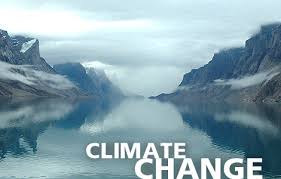September 29, 2013 – The press this week has reported that the latest IPCC interim report on climate change expresses a 95% certainty that the climate change we are observing is human induced.
The report uses a number of terms to describe its conclusions based on evidence. These include levels of confidence that go from very low to very high. It also uses a variety of terms to describe likely outcomes with virtual certainty, 99 to 100%, extremely likely, 95 to 100%, very likely, 90 to 100%, likely, 66 to 100%, about as likely as not, 33 to 66%, unlikely 0 to 33% and extremely unlikely, 0 to 5%. And then it introduces undefined terms like “unequivocal” and “medium confidence” as in:
“Warming of the climate system is unequivocal, and since the 1950s, many of the observed changes are unprecedented over decades to millennia. The atmosphere and ocean have warmed, the amounts of snow and ice have diminished, sea level has risen, and the concentrations of greenhouse gases have increased.
and
“Each of the last three decades has been successively warmer at the Earth’s surface than any preceding decade since 1850. In the Northern Hemisphere, 1983–2012 was likely the warmest 30-year period of the last 1400 years (medium confidence).”
Which brings us to the 95% certainty reported in the mass media. What exactly does 95% certainty mean? Is this like an election poll which states in its disclaimers the sampling size and the accuracy of results 19 out of 20 times? Or is this the proverbial ad piece that states 19 out of 20 doctors recommend a particular drug….? It is no wonder that the IPCC leaves themselves open to all kinds of criticism from climate science deniers when they throw nuanced terms and percentages at the public.
I think the public already is convinced something is happening to global climate. We are pretty decent observers of weather events and notice when we see changes in the environment around us from hotter summers to droughts to observing new patterns in animal and plant species. We have greater trouble in understanding the longer term impacts and that is where we need leadership to play a role. Because it is our leaders that have to accept the certainty of the science and implement calls to action from industry and individuals to alter human behavior to mitigate climate change we create.
As for the 5% uncertainty we need to clearly understand what it actually means. Because the Heartland Institute, the Republican Party and Fox News take that 5% and run with it. So that we all understand where climate deniers are going when they focus on the uncertainty here are their reasons for what we have been observing and reporting for the last 30 years.
The real causes of climate change according to climate change deniers:
- Non-human greenhouse gas causes – it’s the forests and animals rather than cars and industry that are causing CO2 increases.
- Forest fires – all that heat and smoke is bound to cause the air to warm.
- Variations in solar output – the Sun’s energy output is changing (or maybe not since we have not seen any significant change in solar energy since 1750).
- Changes to the Earth’s axial tilt – the Earth has gone through complete cycles of axial wobbling every 26,000 years and that’s all you need to know to explain the variability we are witnessing. For crying out loud, didn’t the wobble contribute to the end of the last Ice Age?
- Changes to Earth’s orbit – it is not circular but elliptical and at certain points in time when combined with changes to axial tilt can change the amount of solar energy striking the Earth. That’s got to be looked at as an obvious explanation for what has been going on.
- Volcanic eruptions – when Mount Pinatubo blew in 1991 the ash it spewed into the upper atmosphere lowered temperatures globally for almost a half decade. The argument then goes that once the particulate matter settled normal warming reasserted itself and explains the apparent increase we have witnessed over the last two decades.
- It’s just normal variability. Temperatures go up and go down. Sometimes it rains. Sometimes it doesn’t.
















